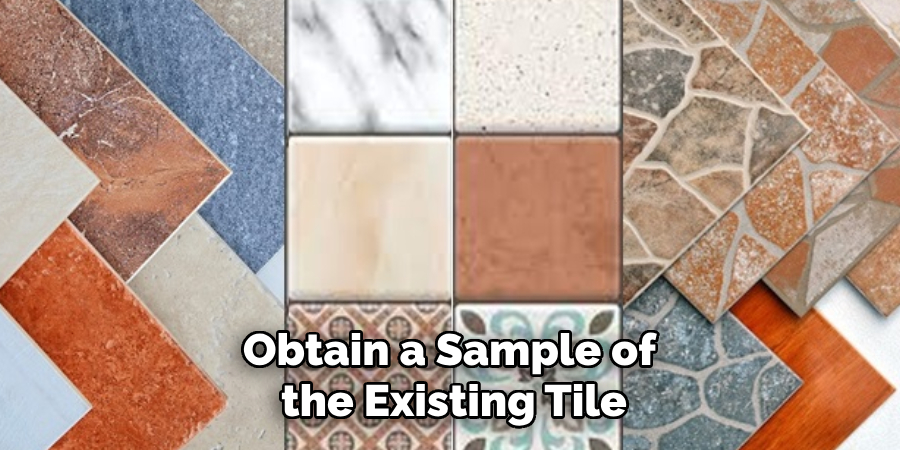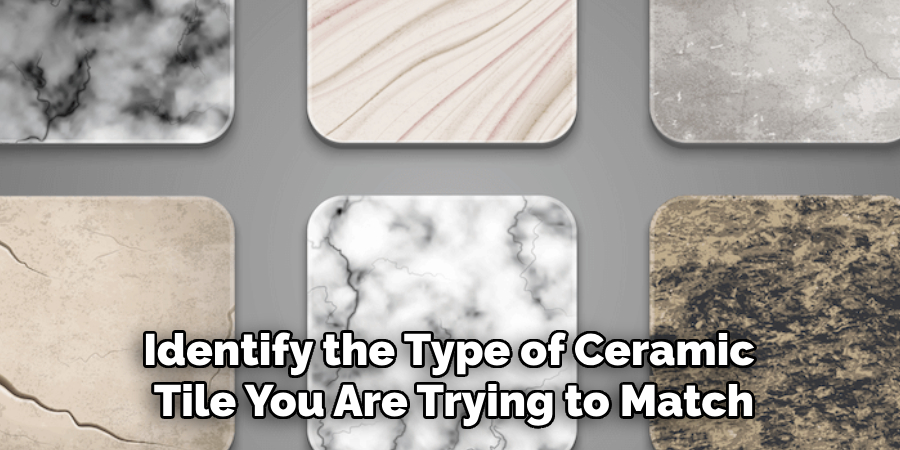When embarking on a renovation project or repair involving ceramic tiles, matching existing tiles can be a challenging yet essential task. Older tiles may have been discontinued, making it difficult to find identical replacements. However, achieving a seamless look is possible with the right approach and resources.
This guide on how to match old ceramic tile delves into practical strategies and tips for matching old ceramic tiles, ensuring a cohesive and visually appealing result, whether for a small patch or a more extensive revamp.
Why Matching Old Ceramic Tile Matters?
Matching old ceramic tile is crucial for several reasons:
Aesthetic Purposes:
Whether you are repairing a cracked or chipped tile or completing a larger renovation project, matching old tiles ensures a cohesive and visually appealing result. Mismatched tiles can be an eyesore and disrupt the overall aesthetic of a space.
Property Value:
In addition to enhancing the appearance of a room, matching old ceramic tile can also help maintain or increase the value of a property. A well-maintained and visually appealing home is more likely to attract potential buyers and command a higher price.
Uniformity:
Using identical or closely matched tiles also ensures uniformity in terms of material, color, and size. This helps create a seamless flow throughout the space, making it appear larger and more put-together.
Needed Materials
To successfully match old ceramic tiles, you will need the following materials:
- Old Ceramic Tile Sample
- Measuring Tape
- Digital Camera or Smartphone With a Camera
- Tile Chisel and Hammer (if Replacing Damaged Tiles)
- Grout in the Same Color as Existing Grout (if Applicable)
- Tile Adhesive or Mortar (if Replacing Damaged Tiles)
- Replacement Tiles
8 Steps on How to Match Old Ceramic Tile
Step 1: Obtain a Sample
The first step in matching old ceramic tile is to obtain a sample of the existing tile you are trying to match. This can be done by removing a loose tile or taking a piece from an inconspicuous area, such as inside a closet or under an appliance. Having a physical sample allows you to accurately compare colors, patterns, and textures when searching for a match.

If removing a sample is not feasible, take a high-quality photo with good lighting to capture the tile’s details, including color variations and any unique patterns. This sample or photo will serve as your reference throughout the matching process.
Step 2: Measure the Tile
Once you have obtained a sample, the next step is to accurately measure the tile. Use a measuring tape to determine the dimensions of the tile, including its length, width, and thickness. It’s important to measure not only the visible face of the tile but also its depth to ensure a proper fit with existing tiles. If the tile has a unique shape, take note of any special features or edge designs that may need to be considered when finding a match.
These precise measurements will be crucial when searching for replacement tiles or when confirming the tiles’ specifications during shopping or consultation with tile professionals. Keep this information handy to streamline your search and ensure that any replacements you find are a perfect fit.
Step 3: Identify the Tile Type
Before starting your search for replacement tiles, it’s essential to identify the type of ceramic tile you are trying to match.

This can include factors such as shape, color, pattern, texture, and finish. Identifying these elements will help narrow down potential options and make it easier to find a suitable match. If you are unsure about the specific type of tile, take your sample or photo to a reputable tile supplier or professional for assistance.
Step 4: Consult with Tile Professionals
With your sample or photograph in hand, consult with tile professionals to gain expert advice and assistance in finding a match. Tile professionals, such as those at specialty tile stores or showrooms, possess extensive knowledge of tile materials, trends, and historical designs.
They can provide valuable insights into where you might find similar tiles, recommend manufacturers that might still produce older styles, or suggest alternative matches that maintain the aesthetic you desire. Additionally, they may offer services like custom tile-making if an exact match isn’t readily available. Their expertise will be instrumental in navigating the vast range of tile options and ensuring that you achieve a seamless and satisfying tile replacement or renovation.
Step 5: Check for Discontinued Tiles
In some cases, the existing tiles you are trying to match may have been discontinued or are no longer in stock. This can be a common occurrence for older or vintage styles. If this is the case, explore your options for discontinued tile sources. These can include online marketplaces, specialty stores that carry vintage items, or local second-hand shops and salvage yards.

If you are unable to find an exact match, consider using a complementary tile that coordinates with the existing tiles in terms of color and style. This can create a unique and visually appealing look while still maintaining a cohesive design.
Step 6: Consider Tile Alternatives
If finding an exact match proves to be challenging, consider using alternative tiles that complement the existing ones instead of trying to find an identical replacement. This could include selecting complementary colors or patterns, incorporating different shapes and sizes, or opting for a coordinating mosaic or accent tile. These alternatives can add interest and character to the overall design while still creating a cohesive look.
The key is to strike a balance between finding a perfect match and incorporating new elements that enhance the existing tiles. This approach can also be cost-effective, as sourcing alternative tiles may be more budget-friendly than trying to find an exact replacement.
Step 7: Pay Attention to Lighting
When comparing potential replacement tiles to existing ones, pay attention to lighting conditions. Natural and artificial lighting can affect how colors appear, so it’s important to view tiles in different lighting situations when making your final decision.
Take samples home in different lighting conditions to see how they look in your specific space. This will help ensure that the replacement tiles blend seamlessly with the existing ones once installed.
Step 8: Install and Finish
Once you have found a suitable match and have all the necessary materials and tools, it’s time to install the new tiles. If replacing damaged or missing tiles, carefully remove the old ones using a tile chisel and hammer. Follow proper installation techniques for ceramic tiles, such as spreading adhesive or mortar evenly on the substrate and pressing each tile firmly into place.
Once all tiles are installed, allow adequate drying time before applying grout (if applicable) and finishing touches, such as sealing edges or cleaning any excess grout. In some cases, it may be beneficial to hire a professional tile installer to ensure a flawless and long-lasting result.

Following these steps on how to match old ceramic tile and taking the time to accurately match and install replacement tiles can help maintain the beauty and functionality of your tiled surfaces. With proper care and maintenance, they will continue to add character and value to your home for years to come.
Frequently Asked Questions
Q: Can I Just Replace a Few Damaged Tiles Instead of the Entire Floor or Wall?
A: In most cases, it is possible to replace individual tiles without redoing the entire surface. However, if you are unable to find an exact match or cannot achieve a seamless look with alternative tiles, it may be necessary to redo the entire area. The decision ultimately depends on your specific situation and desired outcome.
Q: How Do I Prevent Future Tile Damage or Need for Replacement?
A: Proper maintenance and care are key to preventing tile damage and the need for replacement. This includes regularly cleaning and sealing tiles, avoiding harsh chemicals or abrasive tools, and addressing any issues promptly, such as cracks or loose tiles.
Additionally, be mindful of heavy objects or furniture that may cause pressure or impact on tiles, and use protective measures like felt pads under furniture legs to minimize potential damage. Overall, being proactive in maintaining your tiles can prolong their lifespan and avoid the need for frequent replacements.
Q: Can I Replace Ceramic Tiles with Different Tile Materials?
A: Yes, it is possible to replace ceramic tiles with different materials such as porcelain, natural stone, or glass. However, keep in mind that the new tiles may have different characteristics and require specific installation techniques, so it’s best to consult with a tile professional for guidance. Additionally, consider how the new material will blend with existing tiles and if any necessary adjustments need to be made to create a cohesive look.
Conclusion
Replacing or matching ceramic tiles can be a challenging task, but with these steps, you can find the perfect replacement while maintaining the desired aesthetic for your space. Remember to take precise measurements, identify the type of tile, consult with professionals, consider alternatives if needed, pay attention to lighting conditions, and follow proper installation techniques for a successful outcome.
With patience and perseverance, you can achieve a seamless and satisfying tile replacement or renovation that enhances the beauty of your home. So next time you encounter damaged or missing tiles in your space, don’t fret – just follow these steps on how to match old ceramic tile and find the perfect match! Happy tiling!
Specialization:
- Master of wheel-throwing, hand-building, and advanced glazing techniques
- Focus on creating both functional pottery and decorative art pieces
Recognition:
- Celebrated by collectors and art enthusiasts for creating one-of-a-kind pieces that blend artistry with functionality
- Participates in local and national exhibitions, earning accolades for his innovative designs and craftsmanship
Passion:
- Deeply committed to exploring and pushing the boundaries of ceramic artistry
- Continuously experiments with new materials, firing techniques, and artistic concepts to evolve his craft
Personal Philosophy:
- Believes in the transformative power of art, aiming to evoke emotions and connections through his ceramic creations
- Advocates for sustainability in ceramics, using eco-friendly materials and practices whenever possible